The U.S. vaccination rollout has picked up the pace with the country now averaging more than 700,000 vaccinations a day – the highest rate in over a month.
The daily average for Americans getting their first doses is more 500,000, the highest in over two months, according to the White House COVID-19 data director.
More than 195 million Americans have now received at least one dose of a Covid vaccine, representing just over half of the population.
Many of the states with high vaccination rates are also those currently facing a COVID surge. In Louisiana, for example, vaccination rates have tripled in the past three weeks.
But it will take months to make up for vaccination deficits if the U.S. continues administering shots at its current pace.
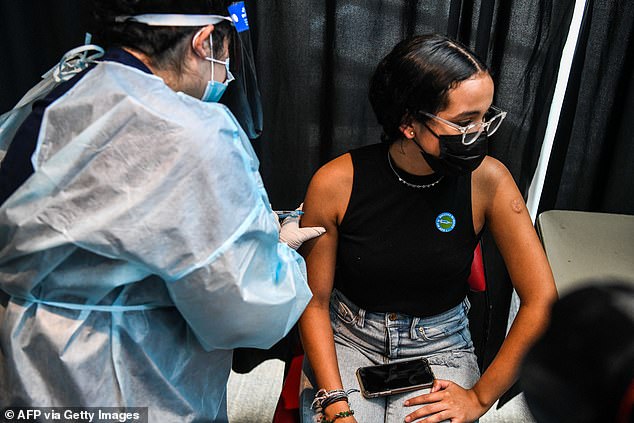
The U.S.’s daily vaccination rate is now the highest in over a month. Pictured: A healthcare worker vaccinates a teenaged girl at a vaccination event in Miami, August 2021
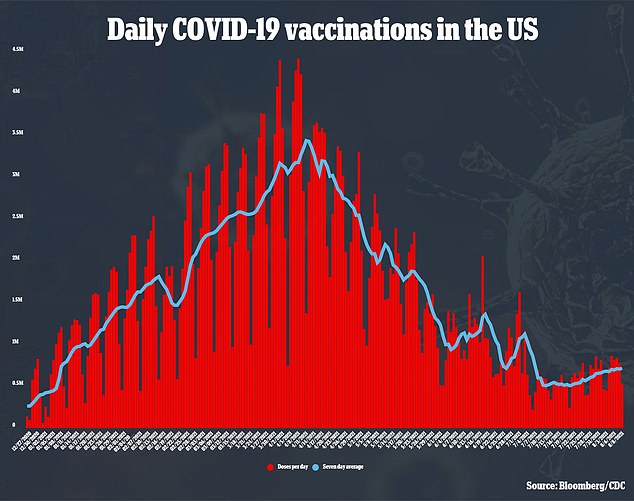
About 715,000 vaccine doses are being administered every day, the highest rate since July 7
As the U.S. faces a case surge driven by the Indian ‘Delta’ variant, vaccine demand is rising.
On August 10, the Centers for Disease Control and Prevention (CDC) reported that 618,000 new doses were administered in the past day.
That’s 36 percent higher than the previous Tuesday, when 453,000 new doses were administered.
The U.S. is now averaging 715,000 doses a day, which is the the highest rate seen since July 7.
Americans getting their first shots make up the majority of that 715,000. The daily average for first doses is 503,000 – the highest number in over two months.
‘New people are getting vaccinated at the highest rate in over two months. Let’s unite against COVID-19,’ White House Covid Data Director Cyrus Shahpar tweeted on Tuesday.
Currently, 195.2 million Americans have now received at least one dose of a Covid vaccine, representing just over half of the nation’s population.
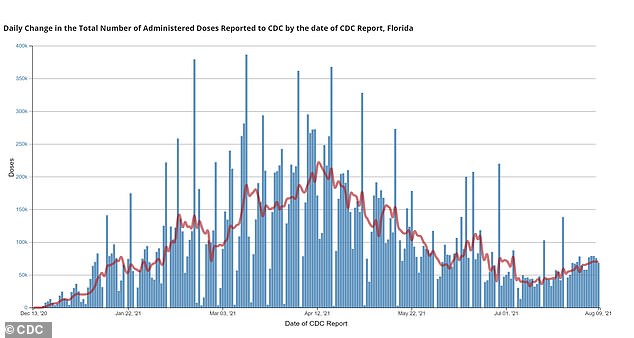
In Florida, vaccinations have increased from 40,000 doses a day in mid-July to 70,000 doses a day in the past week

In Louisiana, daily vaccinations have tripled in the past three weeks – now at 18,000 a day
Current vaccine demand is driven by the Delta surge, as evidenced by recent vaccination spikes in the states that have been hardest hit.
In Florida, for example, vaccinations have increased from 40,000 doses a day in mid-July to 70,000 doses a day in the past week.
Florida is the site of 23 percent of the nation’s new Covid cases over the past week, though the state makes up just seven percent of the U.S. population.
Hospitals in the state have become overwhelmed with patients, and in some cases are canceling elective surgeries.
As unvaccinated people in the state realize their Covid risk, they may be more motivated to get their shots.
The situation is similar in Louisiana, also a major Delta hotspot. Daily vaccinations in Louisiana have tripled, from 6,000 a day in mid-July to over 18,000 a day in the past month.
If Florida and Louisiana were independent countries, they would have the two highest case per capita rates in the world.
Mississippi and Alabama are two other hard-hit, under-vaccinated states.
In both states, daily vaccinations are up from about 5,000 in July to over 10,000 this past week.
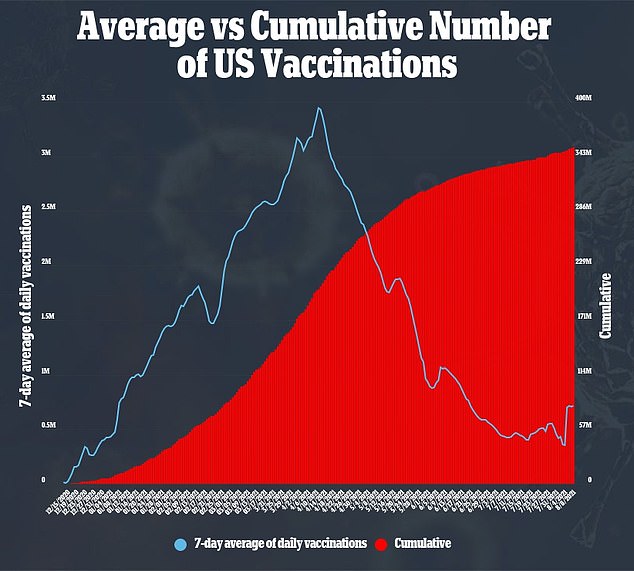
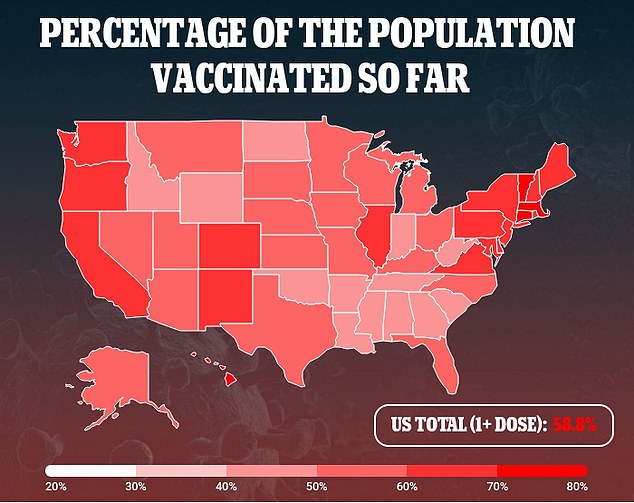
While health experts are glad to see more people getting protected against Delta, vaccinations will need to continue at this pace for a long time for southern states to catch up to better-vaccinated areas.
According to Bloomberg’s vaccination tracker, at the U.S.’s current vaccination rate, it would take six months for 75 percent of the population to be covered.
‘Across the board, we are seeing increases in cases and hospitalizations in all age groups,’ CDC Director Dr. Rochelle Walensky said at a press briefing on August 5.
‘Those at highest risk remain people who have not yet been vaccinated.
‘Now is the time to get vaccinated. We know these vaccines are working and we know they save lives.’
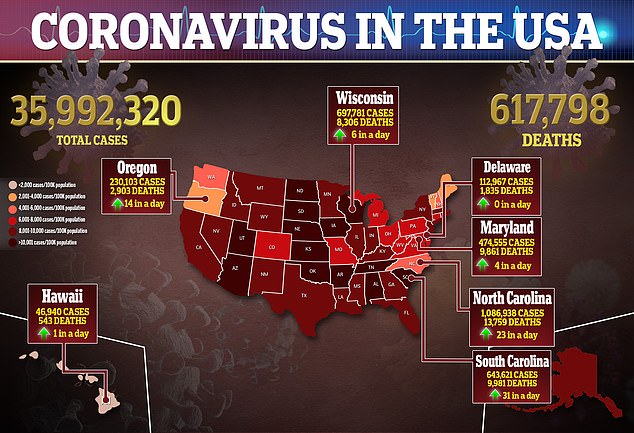
Source link : https://www.dailymail.co.uk/health/article-9881471/Nearly-715-000-COVID-19-vaccines-given-day-HIGHEST-month.html











